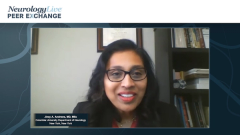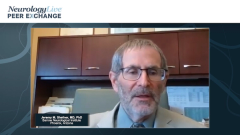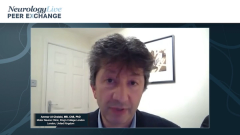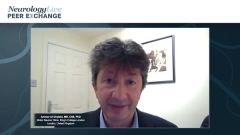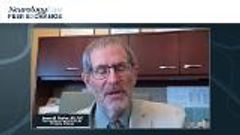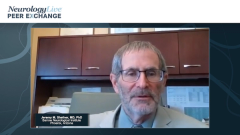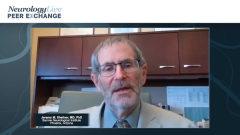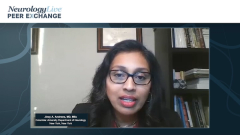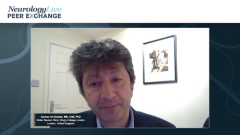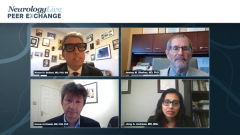
Diagnosis and Management of ALS During COVID-19
A panel of key opinion leaders provides insight into how COVID-19 has continued to impact the diagnosis and management of patients with amyotrophic lateral sclerosis (ALS).
Episodes in this series

Richard S. Bedlack, MD, PhD, MS: It is safe to say that we are all similar in terms of how we make a diagnosis and start the care of people with ALS [amyotrophic lateral sclerosis], but then COVID-19 hit a little over a year ago. Can you each tell me 1 thing that this did to challenge you in the ways that you make diagnoses and the ways you treat your patients? How did you find a way around it? Jeremy?
Jeremy M. Shefner, MD, PhD: I would say that the 1 thing that has not changed much is the way I make diagnoses because our entire neurology practice quickly pivoted to seeing almost all of our patients by telemedicine, which does not make it impossible to do an examination. But to me, it makes it impossible to do an exam that would allow me to be confident about ALS. We have continued to encourage patients to come into the clinic at least once for a good exam.
The things that need to have been done to make that diagnosis, we do in a similar manner. The differences are after that. Even with that visit, one of the mainstays of the return visit for patients with ALS is an assessment of the respiratory function. For a good chunk of this pandemic, the way we test respiratory function, which is with a spirometer by asking patients to take big breaths in and out through the spirometer, would mean potentially spewing droplets of what could be infectious particles throughout the room. This was felt to be, not unjustifiably, a risky procedure.
The amount of these tests that we at Barrow Neurological Institute performed went way down, so we looked at different ways of getting that information, which we all would think is important. Some of the ways include giving people a small home spirometer, which costs about $100, and we encourage them to do it at home and send us the data. There are ways to estimate the vital capacity, which is the number that we use, either by asking patients to take a deep breath and count as far as they can, or just say “ah” as long as they can. Both of these have good correlations with vital capacity, so we jury-rigged that to some extent.
The biggest change in clinical care is simply that many patients do not come back, or they do not come back frequently after their initial visit and are seen by telemedicine. It has been, maybe not surprising, but it has been dramatic how much you can get done in that kind of a visit. Most of the interim care of the patient with ALS is formed by the discussion that you have with the patient. The ability to see the patient in their house, surrounded by their family, allows us to get a view of the ways that they can deal with the home environment, and that has been a significant plus. As patients then get more impaired, we used to feel increasingly bad about dragging people to the clinic when it took a whole day and knocked them out for 2 days after that. We can now see them in their home, and that has been a tremendous boon for many patients. My hope is certainly that we will not give up on that and that we will be able to do this at least in selected cases in the future.
Jinsy A. Andrews, MD, MSc: I could add that it has been a similar experience for us at Columbia University Department of Neurology. New York City was hit hard with COVID-19, so we converted completely to telemedicine for clinical care. It posed challenges because I could not bring patients to the facility for a physical exam. Diagnosis was a major challenge, and this sometimes meant that people who had atypical presentations may have had some delay in their diagnosis during that period.
For the most part, many had tests done already because we are a tertiary referral center. We are a specialist center, so we see a lot of patients who have already had many tests completed. As Jeremy said, you can do a lot on video in terms of assessing how a person speaks, moves, and you can look at things because observation is key. Often, if I was a bit unsure, I would start implementing some of the things that we do for ALS by explaining the risks and benefits of the treatment because the earlier you implement some of these things, including some of the pharmacological treatments, the more effect it may have on the disease progression. It was a complicated conversation when I was not entirely sure of the diagnosis. Some people took it and would try it, given that I would see them in the future to confirm, and we might or might not discontinue certain things. Simple things like nutrition, exercise, emotional health, and even trying riluzole early, was not too difficult.
Richard S. Bedlack, MD, PhD, MS: Ammar?
Ammar Al-Chalabi, MB, ChB, PhD: It is similar to Jinsy and Jeremy's experiences. We [at Motor Neuron Clinic, King’s College London] had a full lockdown, and we were not allowed to do face-to-face visits. That meant we had to convert to telemedicine. Most of our patients were able to handle video calls but not all of them. That made it difficult, so there were often technical difficulties at the other end, or there were poor internet connections, or it was somebody who did not quite understand how a video call might work.
Generally, it worked well. As both Jinsy and Jeremy have said, it is surprisingly informative. You can get a lot of information not only from the history, of course, which 90% of the diagnosis comes from, but you can get a lot of the examination findings. You can see fasciculation and wasting. You can see weakness. You can see the person’s gait. The key thing that you cannot to do is assess upper motor neuron findings easily. You can tell if a tongue is moving in a spastic way, and you can probably make some kind of test that would tell you if a hand tap or something like that might suggest spasticity. But it would be difficult, so there was that aspect. Of course, breaking the diagnosis by video is traumatic; it is difficult.
The other things that were affected were the investigations. We are a tertiary referral center, so a lot of the tests have been done, but not always. If we wanted an MRI or EMG [electromyography], that was often delayed because staff were redeployed, or the service was not running. For other people who were more advanced who might have needed therapy, the therapist was able to do a video call, but that is not the same as seeing somebody face to face. If somebody needed a gastrostomy or noninvasive ventilation, that was difficult to implement but not impossible. We have COVID-19 safe sites where the person could go and then be fitted with a gastrostomy feeding tube or with noninvasive ventilation, but it was certainly challenging.
What will happen, as Jeremy and Jinsy have said, is that people will stick to telemedicine much more in the future because it is useful for somebody not to have to come up and be exhausted.
Richard S. Bedlack, MD, PhD, MS: Thank you for watching this NeurologyLive® Peer Exchange. If you enjoyed the content, please subscribe to our e-newsletters to receive upcoming Peer Exchanges and other great content right in your inbox.
Transcript Edited for Clarity
Newsletter
Keep your finger on the pulse of neurology—subscribe to NeurologyLive for expert interviews, new data, and breakthrough treatment updates.

